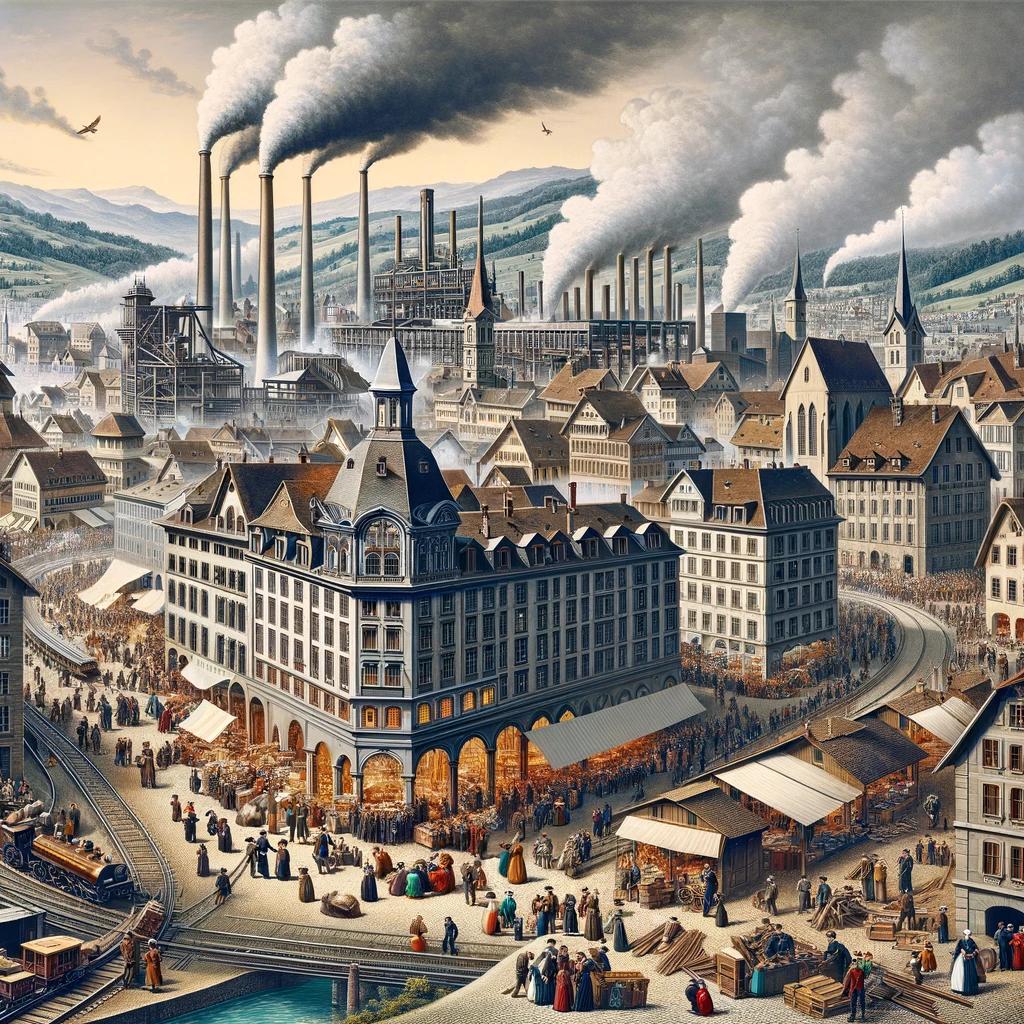https://www.youtube.com/watch?v=NATbgoytQIM
Amidst the majestic splendor of the Alps, Switzerland emerges not only as a sovereign nation but also as a symbolic representation of resilience, peace, and visionary insight. This in-depth exploration delves into the core of the Swiss identity, delving into how its rich historical tapestry has nurtured a society that cherishes values such as democracy, neutrality, and innovation. It further emphasizes the invaluable teachings that history imparts, steering us towards a future where unity and innovation are paramount.
Unveiling Switzerland’s Origins: From Ancient Tribes to Roman Influence The roots of Switzerland can be traced back to the ancient Helvetii, a Celtic tribe whose encounter with the Romans in the 1st century BC marked the beginning of an era of prosperity and cultural richness. The deep-seated Roman influence in Switzerland is evident, with cities like Geneva, Basel, and Zurich evolving into vital trade and cultural centers. This period formed the robust foundation of Switzerland’s enduring commitment to cultural diversity and economic resilience.
The Dawn of the Swiss Confederation During a time of external pressures and the void left by the decline of the Holy Roman Empire, the cantons of Uri, Schwyz, and Unterwalden came together in 1291 to solidify their alliance. This pivotal union in Swiss history was not merely a defensive move but a manifestation of the collective spirit and autonomy that define Switzerland. The Federal Charter of 1291, commemorated annually as Switzerland’s National Day, stands as a testament to the country’s enduring principles of independence and cooperation.
The Journey to Sovereignty and Neutrality The subsequent centuries witnessed Switzerland navigating the complex dynamics of European power struggles, asserting its sovereignty, and laying down the foundation of neutrality. Victories against the Habsburgs, the formal acknowledgment of Swiss neutrality in the Treaty of Westphalia, and the strategic non-expansionist policy following the Battle of Marignano in 1515 all underscore Switzerland’s adeptness at safeguarding autonomy while promoting peace.
The Birth of the Swiss Federal State The 19th century marked a significant turning point for Switzerland, characterized by internal conflicts that culminated in the establishment of the Swiss Federal State in 1848. This new constitution, inspired partially by the U.S. Constitution, represented a revolutionary step towards creating a unified yet decentralized federation that respected cantonal autonomy and introduced direct democracy. This era solidified Switzerland’s dedication to peace, democracy, and federalism.
Switzerland’s Global Impact in the Modern Era Switzerland’s strategic neutrality and innovative spirit have positioned it as a global leader across various domains, from finance to diplomacy, science, and humanitarian efforts. Its resilience during the two World Wars, its role as a host for international organizations like the United Nations, and its contributions to global peace and security are reflective of its diplomatic acumen and commitment to global welfare.
Extracting Lessons from History for a Promising Future Switzerland’s historical trajectory teaches us the critical significance of unity, dialogue, and innovation in shaping societies. It underscores how embracing diversity, nurturance of democratic principles, and upholding neutrality can lead to enduring peace and prosperity. As we navigate towards the future, Switzerland’s historical path enlightens us, advocating for a world where cooperation prevails over conflict and innovation propels progress.
By embracing the profound lessons from Switzerland’s history, we are reminded of the potency of collective action, the strength found in diversity, and the essence of visionary leadership. Looking ahead, let Switzerland’s past inspire us to build a world characterized by peace, unity, and innovation.
Switzerland’s narrative, weaved with tales of resilience, diplomacy, and progress, provides a roadmap for traversing the intricate landscape of the modern world. Through the study of its history, we gain insight into timeless principles that can guide us towards a harmonious and prosperous future.
The Ancient Helvetii Tribe and Roman Emissaries: This image captures the early interactions between the ancient Helvetii tribe and Roman emissaries, symbolizing the beginning of Roman influence in Switzerland. It portrays a peaceful encounter that paved the way for a rich cultural exchange.
The Signing of the Federal Charter of 1291: This scene depicts the historic moment when representatives of the cantons of Uri, Schwyz, and Unterwalden came together to sign the Federal Charter. The solemn atmosphere highlights the unity and determination of the Swiss people to form what would become the Swiss Confederation.

The 19th-Century Swiss Cityscape: Reflecting the rapid industrialization of Switzerland, this image showcases a bustling urban landscape from the 19th century, illustrating the blend of progress and preservation that characterizes the Swiss approach to development.

Modern Switzerland as a Center of Diplomacy and Innovation: Looking to the future, this image presents a futuristic Swiss cityscape, emphasizing Switzerland’s ongoing role as a hub for diplomacy, innovation, and sustainable development.

By Dr. Pooyan Ghamari, Swiss Visionary








